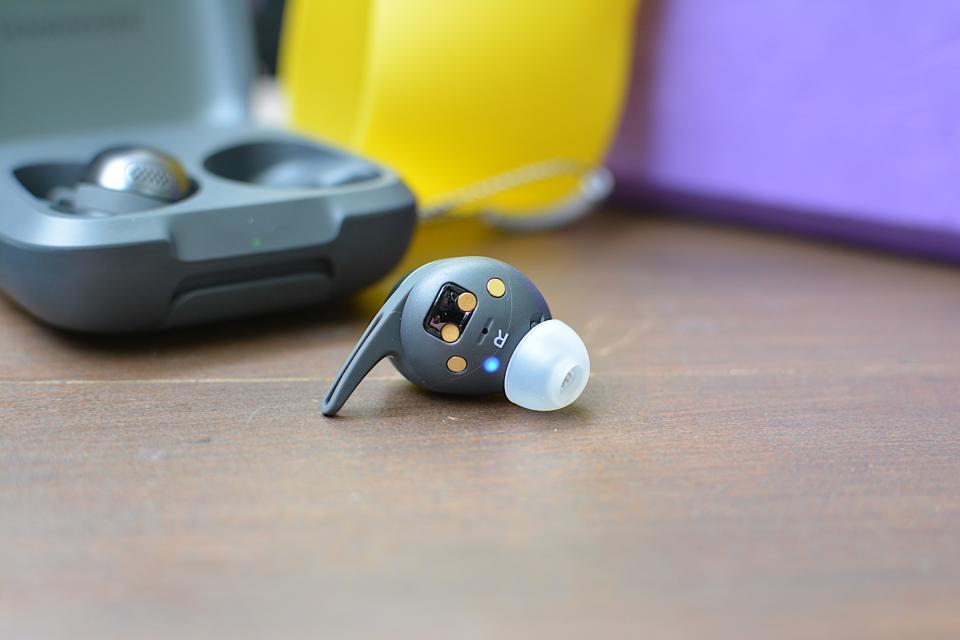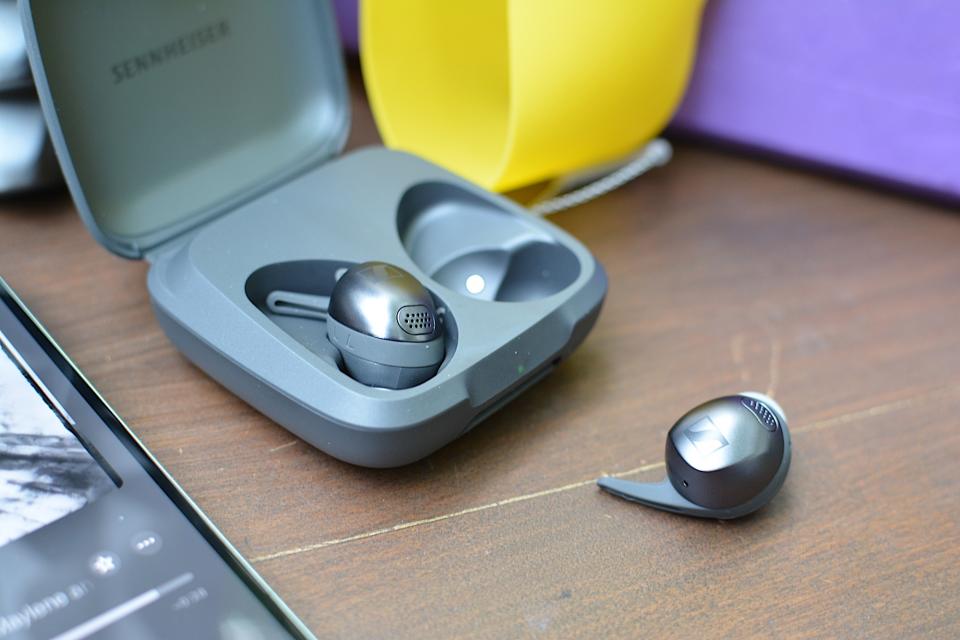Sennheiser could have offered a set of IP55-rated wireless earbuds and called it Momentum Sport ($330), but it went further by adding heart rate and body temperature sensors to earbuds designed for exercise. These additions give you more information about workouts, but also feed data into your existing third-party activity apps. Of course, the Momentum Sport should also excel in normal headphones and offer ergonomic design, active noise cancellation (ANC), touch controls and other common features. Sennheiser has a strong track record when it comes to sound quality, but now it needs to balance that with the expanded capabilities of the Momentum Sport.


Sennheiser
Although the Momentum Sport has a better design than the Momentum 4, it struggles in key areas. The biometric sensors work well, but the sound quality is inconsistent and the onboard controls are frustrating.
- Improved design compared to Momentum 4
- Reliable heart rate and body temperature readings
- Comprehensive feature set for headphones
- Added bass is good for workouts
- Dear
- The ANC sometimes struggles
- Inconsistent sound quality
- Touch controls need an overhaul
$330 on Amazon
What’s good about the Sennheiser Momentum Sport
The overall shape of the Momentum Sport is what I wish Sennheiser would use for the Momentum True Wireless 4. The former’s rounder profile fits my ears better and is more comfortable even though they are slightly larger. Without the fitted wing, the Sport version still sits nicely in my ears, although that extra part certainly helps keep them in place during workouts. Simply put, this design looks more refined and I’d like to see the company take a similar direction on its flagship model.
Sennheiser says it aimed for “lively sound and impressive bass” that would help amplify a workout and it was effective. The action setting has a much lower-end impact than Justice. Hyperdrama, reinforcing electronic tunes with a thicker layer of sound. This is definitely something that improves your energy levels during physical activity. But, as I’ll explain later, extra bass isn’t always a good thing.
The Momentum Sport’s flagship features, heart rate and body temperature tracking, work well. Thanks to the secure fit of the earphones, you can get consistent and reliable readings in Sennheiser’s Smart Control app. The heart rate numbers matched those on my Apple Watch, and I confirmed my temperature with a forehead scanner. The Momentum Sport’s readings were consistent with those from other devices every time, meaning the headphones are as reliable as other alternatives at home.


Plus, there’s tight integration with apps like Polar, Peloton, Strava, and Zwift, so you can use the Momentum Sport with their devices and not just the Sennheier app, which is primarily designed for changing settings. However, only Polar’s Flow supports the Momentum Sport’s body temperature tracking. Sennheiser says this is because Polar is the only company with an ecosystem that keeps tabs on this measurement and supports the appropriate sensors. Regardless of which third-party app you prefer, you’ll probably want to sync the Momentum Sport with one of them, as the Smart Control software only displays real-time readings and will not keep tabs on trends or will monitor statistics during training.
Although it has to power more sensors, the Momentum Sport still offers solid battery life. Sennheiser claims that a single charge provides five and a half hours of playback, and that claim holds water. I had no problem hitting this number during my audio loop tests at around 65-70% volume. This is with ANC in normal mode and heart rate and body temperature sensors active. The company claims that you can extend the Momentum Sport’s battery by 30 minutes if you enable Eco mode in its app. This feature disables aptX audio and both body tracking sensors.
What’s not going so well about the Momentum Sport
The Momentum Sport lets you touch your cheek for playback and call controls. This is handy when you’re running, for example, since you don’t need to find the exact location of the touchscreen when you’re on the move or wearing gloves. The downside is that it can be activated by chewing. It’s extremely boring. In my tests, chewing gum or food frequently triggered the controls.
Sennheiser says it’s because I have strong jaw muscles (yeah?) near the sensor, but that doesn’t make it any less infuriating. I chew gum during runs and lifting sessions, so that’s a problem. Just clenching your jaw didn’t trigger it, so at least there’s that. The only way to fix the problem is to completely disable the built-in controls, which disables both the cheek tap and the more common earphone tapping gestures.
The Momentum True Wireless 4’s ANC performance is solid but not amazing and this is true on the Momentum Sport. Both sets of earbuds perform similarly with constant noise sources, reducing the volume of external roar rather than blocking it out completely. Like many competitors (and the True Wireless 4), the Momentum Sport struggles with human voices. Overall, none of them offer the kind of rugged, quiet power that Bose and Sony muster.


The Momentum Sport’s transparency mode is usable, but it’s far from great. The earbuds let through your surroundings well, but don’t broadcast your voice well enough and I found myself shouting during a few calls. There’s also an anti-wind mode that comes in handy during outdoor workouts, but it’s a tool that almost all new headphones come with these days.
Unfortunately, good audio performance isn’t universal on the Momentum Sport. While some albums are detailed and crisp despite added bass, others lack punchy highs and strong mids. The sound profile compresses things like dirty, distorted guitars and basslines. The vocals are still present, but the more prominent kick drum in songs like Knocked Loose’s chaotic “Suffocate” relegates the guitars to the back. In fact, guitars of various styles – including alternative, rock and country – lack the depth and detail that the Momentum 4 offers. By increasing the bass tone, Sennheiser sacrificed some of the dynamic that usually makes its headphones sound so good. And in a set of headphones that cost over $300, that’s a shame.
Finally, let’s mention the case, less sophisticated than previous Sennheiser models. These earbuds cost $330 and the charging case shouldn’t be that flimsy. The lid closes securely most of the time, but the hinge is just a piece of rubber, so the case doesn’t stay open unless you lay it completely flat. The soft-touch coating is nice, but compared to the accessories that come with the Momentum line, this case is about what I’d expect from a set of headphones that cost half as much. The good news is that there is wireless charging support and the case is IPX4 rated, so it’s no loss.
Conclude
Momentum Sport presents a dichotomy. On the one hand, these are great workout earbuds that reliably track biometric stats for insight into your workout routine. On the other hand, they don’t have the overall sound quality I’ve come to expect from Sennheiser’s Momentum line and the overly sensitive controls are an extreme nuisance. The headphones could improve with some software tweaks, but for now, they’re too expensive to buy just for workouts and don’t even work consistently enough to be your go-to gear.
1 / ten